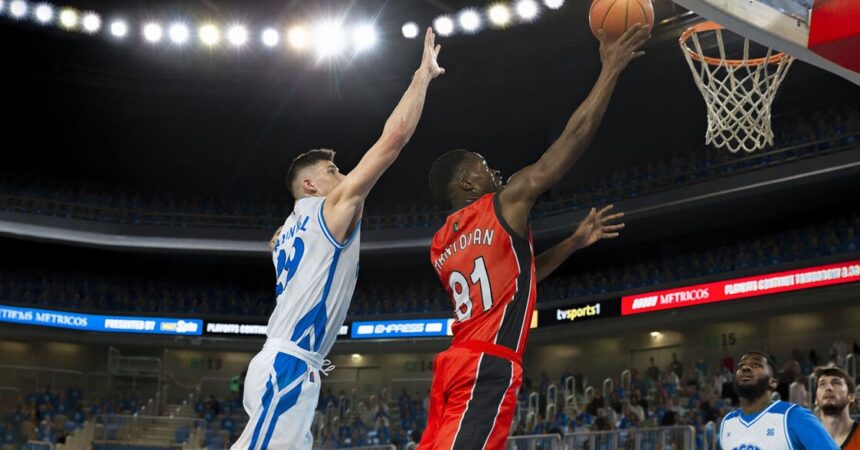We are talking about three pointer in hoops slang. Basketball, a game loved and played by millions around the world, is full of unique terms and slang that enrich its culture and communication on the court. One such term that stands out is the “three-pointer”. This guide delves into the intricacies of this term, exploring its origins, significance, and impact on the game.
Understanding Three Pointer in Hoops Slang
Historical Context and Evolution
The concept of the three-pointer was introduced to add an extra layer of strategy and excitement to the game. The American Basketball Association (ABA) was the first professional league to adopt the three-point line in 1967, aiming to attract fans with higher-scoring games. The NBA did not immediately adopt the three-point line when the ABA and NBA merged in 1976. However, it was finally integrated into NBA play for the 1979-80 season.
Significance in Modern Basketball
In contemporary basketball, the three-pointer is not just a scoring method but a crucial element of team strategy. Teams with proficient three-point shooters can spread the defense, creating more opportunities for driving to the basket or mid-range shots. Players like Stephen Curry and Klay Thompson have revolutionized the game with their exceptional three-point shooting skills, making the three-pointer a focal point of their teams’ offensive strategies.
Impact on Player Roles and Team Dynamics
The rise of the three-pointer has significantly influenced player roles and team dynamics. Stretch fours and stretch fives—terms for power forwards and centers who can shoot from long range—have become valuable assets for modern teams. These players create mismatches and force opposing big men to defend on the perimeter, opening up the lane for drives and cuts.
Training and Skill Development
To master the three-pointer, players undergo rigorous training that focuses on both physical and mental aspects. Key elements of effective three-point shooting include:
- Shooting Technique: Proper form, including hand placement, release, and follow-through, is crucial.
- Footwork: Quick and balanced footwork allows players to set up their shots efficiently.
- Consistency: Repetition and practice help develop muscle memory and shooting accuracy.
- Mental Toughness: Confidence and composure under pressure are essential for successful three-point shooting.
Statistical Analysis and Performance Metrics
Analyzing Three pointer in hoops slang shooting statistics provides insights into player performance and team strategy. Key metrics include:
- Three-Point Percentage (3P%): The ratio of successful three-pointers to attempts.
- Three-Point Attempts (3PA): The total number of three-pointers attempted.
- Effective Field Goal Percentage (eFG%): A weighted metric that accounts for the extra point awarded for three-pointers.
Teams often use advanced analytics to identify trends and make strategic decisions based on these metrics.
Notable Records and Achievements
Several players have set remarkable records in three-point shooting. For instance:
- Stephen Curry: Holds the record for the most three-pointers made in a single season.
- Ray Allen: Formerly held the record for the most career three-pointers made.
- Klay Thompson: Known for his incredible three-point shooting performances in playoff games.
Cultural Impact and Popularity
The three-pointer has also permeated popular culture, becoming a symbol of skill and excitement in basketball. Fans all over the world celebrate and remember iconic moments, such as game-winning buzzer-beaters from beyond the arc.
Influence on Youth and Amateur Basketball
The prominence of the three-pointer in professional basketball has trickled down to youth and amateur levels. Young players now aspire to emulate their favorite three-point shooters, leading to an increased focus on developing long-range shooting skills from an early age.
Three pointer in hoops slang and Events
Three pointer in hoops slang contest, a staple of NBA All-Star Weekend, showcases the league’s best shooters in a thrilling competition. This event highlights the precision and consistency required for elite three-point shooting, further popularizing the skill among fans and aspiring players.
Challenges and Criticisms
Despite its many benefits, the emphasis on three-point shooting has also faced criticism. Some argue that it has led to a decline in traditional post-play and mid-range shooting, potentially reducing the game’s diversity. Additionally, an over-reliance on three-pointers can lead to inconsistent performance, as shooting percentages can fluctuate more than other types of scoring.
Balancing Offensive Strategies
Effective teams strike a balance between three-point shooting and other offensive strategies. Incorporating a variety of scoring methods keeps defenses guessing and maintains a well-rounded approach to the game.
Future Trends and Innovations
As basketball continues to evolve, the role of the three-pointer is likely to grow even further. Innovations in training techniques, analytics, and player development will continue to shape the way teams and players approach this critical aspect of the game.
Technological Advancements
Advances in technology, such as wearable devices and video analysis, are providing players and coaches with more data than ever before. These tools help optimize training regimens and improve shooting accuracy, ensuring that the three-pointer remains a vital component of basketball strategy.
Global Influence
The global popularity of basketball means that the three-pointer’s impact is felt worldwide. Leagues around the globe are adopting similar strategies, and international players are making significant contributions to the evolution of three-point shooting.
Conclusion
Three pointer in hoops slang is more than just a scoring method; it is a fundamental aspect of modern basketball that influences strategy, player development, and the overall excitement of the game. The three-point shot continues to influence basketball play and fan enjoyment worldwide, both historically and currently.



